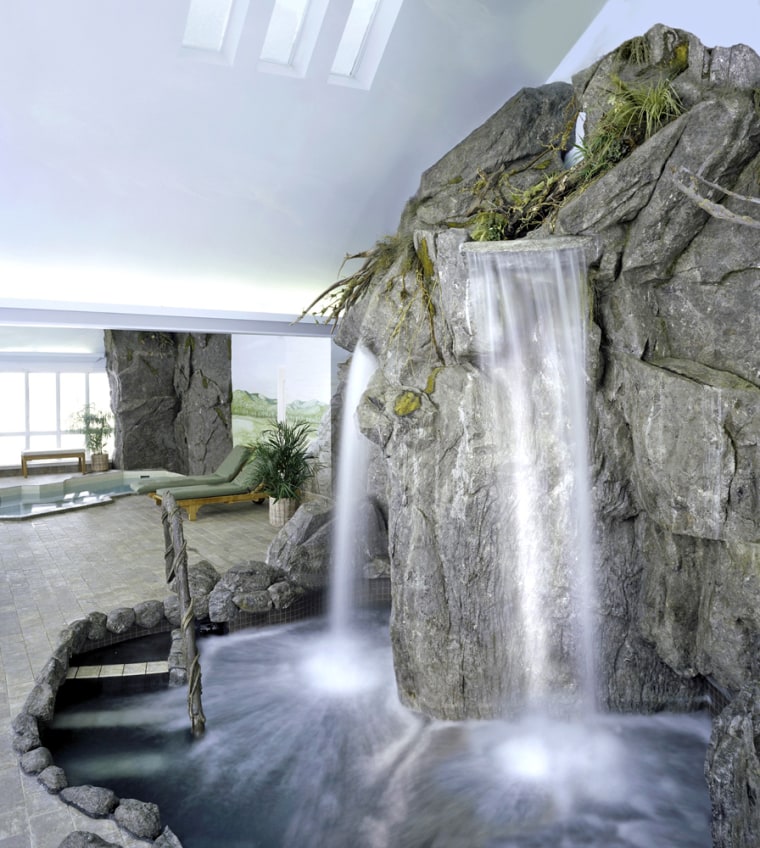Interested in a seaweed wrap or a caviar facial? For people looking to refresh and rejuvenate, it has never been easier to find a luxury spa treatment. What's getting harder, for the spas at least, is staying competitive and profitable in an increasingly crowded market.
The global spa industry generates approximately $40 billion in revenue per year, according to Spa Finder, a New York City-based spa travel and marketing company and the publisher of SpaFinder.com and Luxury SpaFinder magazine. But growth in the industry is slowing significantly. The reason is market saturation. Not only are established spas such as the Golden Door and Canyon Ranch battling to hold on to their long-time customers and attract new ones, but there is also growing competition from new stand-alone luxury spas as well as from hotel chains like Peninsula, Four Seasons (nyse: FS - news - people ) and Marriot's (nyse: MAR - news - people ) Ritz-Carlton chain.
The number of spa openings in the U.S. is increasing at a rate of just 12% per year, down dramatically from the 2000 peak of 51%, according to a 2004 report by the Lexington, Ky.-based International Spa Association. The same report states that U.S. revenue for 2003 ($11.2 billion) represents a 1.8% decline over 2002. Worldwide figures are not available.
Of course, such pressure is good news for consumers. Spas are being forced to continually innovate and improve in order to stay ahead of the, ahem, mudpack.
"With the large increase in the number of spas, and their density in the population, spas are trying to differentiate themselves," says Stephanie Perrone, the vice president of business development at New York City-based Coyle Hospitality Group, which provides quality assurance services to spas.
Terry Herman, a Chicago-based spa consultant, agrees. "Managers recognize the tremendous profit-generating potential of spas," she says. But to stay competitive, "they have to make it a phenomenal experience. Spa amenities have gotten even more upgraded and luxurious recently. People want to be titillated to the extent that they'll talk about the experience forever and never forget it. And with that comes the price tag."
Herman cites the $500 facial--such as the one offered at the Cornelia Day Spa in New York City, which combines two kinds of facials, one of which requires a specially trained technician--as proof that treatments have become more rarefied than ever as spas compete for high-paying customers.
Another way to stay profitable in a tough market is to cater to a specific demographic. "You'll see a lot of niche marketing," says Perrone. "There are getaways just for fitness now. Skincare studios, which have been around for a while, are becoming more popular. Spas with medically based treatments, like intense pulse light and laser hair-removal services, have been a trend for the past two years and are popping up all over."
Eric Ruimy understands the power of niche marketing very well. Ruimy is chief executive and president of Nickel Spa in San Francisco, a franchise of the Paris-based spa and product line, which was launched to cater specifically to men.
"There are a million spas throughout the world for women. We thought it was time for men to start pampering themselves," says Ruimy, who collaborated with Philippe Dumont, Nickel's founder, to bring the spa to San Francisco. (There is also one in Manhattan.) "We wanted a spa that wasn't chi chi, but a fun, relaxing environment where men would feel very welcomed."
Nickel spas are styled after a submarine and designed to be distinctly masculine, with stainless steel and cobalt blue fixtures. The product packaging and explanations are straightforward, and no women are allowed inside, except as estheticians or therapists. Ruimy claims that revenue at Nickel Spa San Francisco has increased 20% per quarter since it opened. There are Nickel Spas planned for Los Angeles, South Beach and Las Vegas within the next seven years.
And how do women feel about being excluded? "Most have thought it's wonderful," says Ruimy. "They feel it is time for men to start taking care of themselves."

The only threat on the horizon is other spas looking to get in on the action--according to Ruimy, the men's spa industry has gone up from 10% of the market to over 25% of all spas' revenue globally. But he seems resigned to the competition. "They're already in it. Other spas are now focusing their attention toward men. They're seeing that it's a viable concept."
If men-only is viable, then so is adults-only. And a new spa in Enniscorthy, Ireland, opened just last December to cater specifically to the no-kids crowd. The 68-room Monart Luxury Destination Spa features grown-up services like its $170 Kigelia Bust Treatment--an exfoliating treatment for neck, back of head and bust that repairs the skin.
With all the choices in the spa world, which one is right for you? To help readers decide, Forbes.com has once again compiled our annual list of Super Spas. We looked at day, destination and resort spas across 11 categories, including Adventure Spa, Beach Spa and Ski Spa. We judged spas according to location (scenic rural setting or accessible from major urban areas) and the quality of service and treatments.
Video: Super Spas
